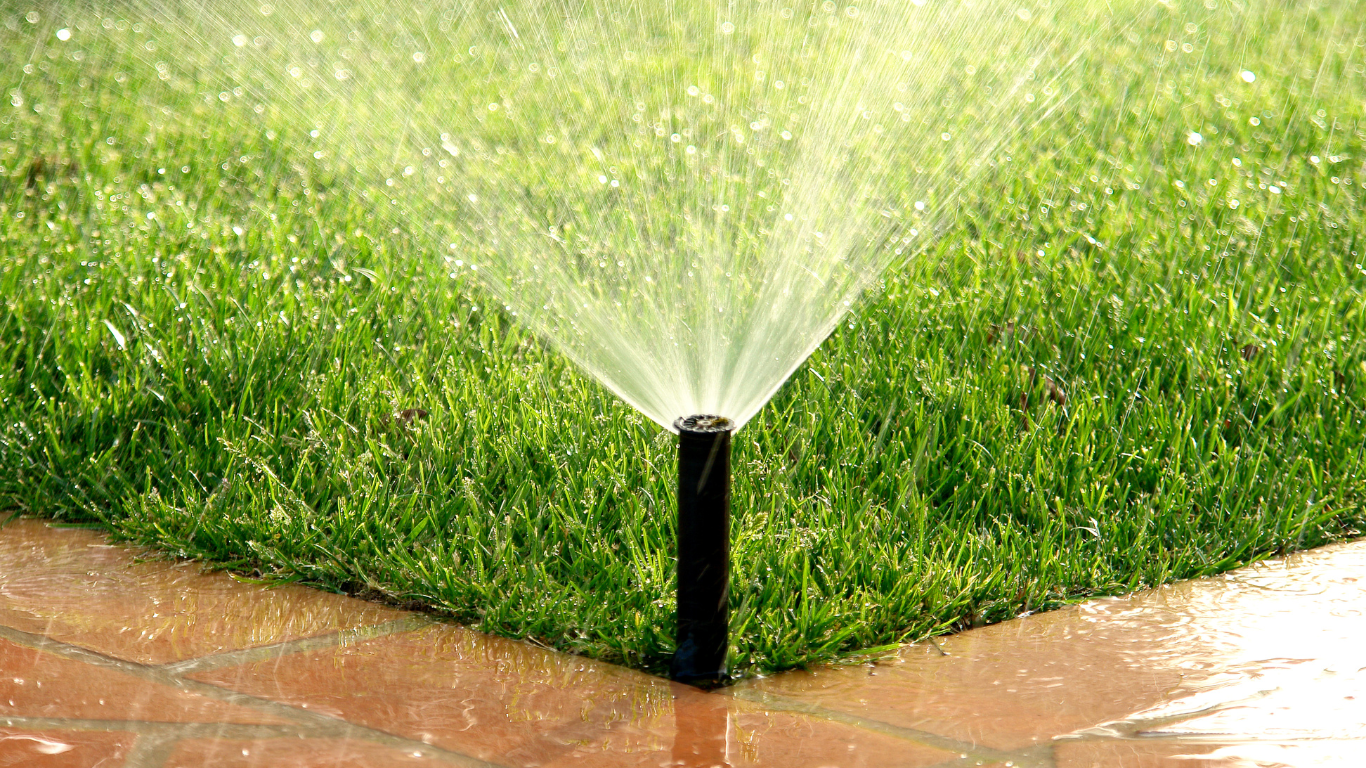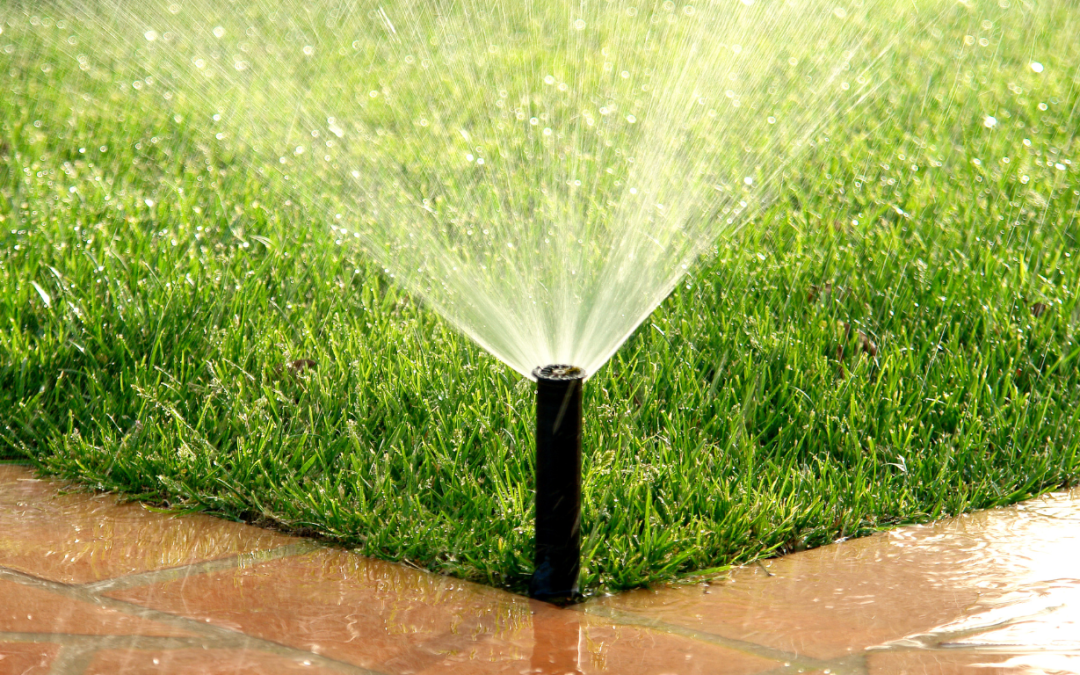Have you ever found yourself staring at your lawn, wondering how long you can keep your sprinklers running on your irrigation system without causing any damage?
You’re not alone.
Many homeowners grapple with this question, especially those recently switching from city water to their well system. It’s a common concern and can lead to much stress if not appropriately addressed.
Running a sprinkler on an irrigation system isn’t quite the same as using municipal water supplies. Different factors are at play, like water pressure, well yield, and the capacity of your aquifer. It’s not as simple as turning on a garden hose and letting it run. And if you’re not careful, you could end up causing more harm than good to your lawn and well system.

How long can you run a sprinkler on an irrigation system?
The answer isn’t one-size-fits-all. It depends on several factors, including the flow rate of your well, the size of your lawn, and the type of sprinklers you’re using. But as a general rule, most irrigation systems can safely run for about 2-3 hours.
We’ll delve deeper into the specifics of running sprinklers on an irrigation system. We’ll discuss determining the optimal running time for your specific situation, maintaining even pressure and flow, and saving money while ensuring your lawn gets enough water.
We’ll also touch on the role of licensed professionals like well drillers and irrigation contractors in helping you make the most of your home irrigation system.
Can I Use My Well To Water My Lawn?
Absolutely! Your well water can be a fantastic resource for lawn irrigation.
Your well taps into the groundwater stored in aquifers beneath your property. A pump draws this water up, creating a supply that can be used for various household needs, including lawn irrigation. The flow rate, or the speed at which your pump can draw water, is crucial in determining how much water you can use for your lawn.
The beauty of using well water for your lawn is that it’s not subject to the same restrictions as city water. You have more control over your supply, and you’re not adding to the demand for municipal water resources. Plus, well water is typically free of the other chemicals often found in city water, making it a healthier choice for your lawn.
3 Pros and Cons of Using a Water Well for Your Lawn
Pros:
-
Cost Savings: Once your well is drilled and your pump is installed, the water you draw is free. This can save you significant money compared to using city water, especially during drought periods when water prices can skyrocket.
-
Control Over Your Supply: With a well, you’re not at the mercy of municipal water supplies. You can water your lawn when it suits you and are less likely to face water restrictions.
Healthier for Your Lawn: Well water is often high in minerals and free from other chemicals, which can benefit your lawn’s health.
Cons:
-
Dependent on Groundwater Levels: If the aquifers supplying your well run low, you may have less water for irrigation. This can be a particular issue during periods of drought.
-
Requires Maintenance: Pumps and other components of your well system require regular maintenance to keep them running efficiently. You may also need to work with an irrigation contractor to ensure your irrigation system is set up correctly.
Energy Usage: Your pump requires energy to draw water from the ground. If you’re using a lot of water for irrigation, this could lead to higher energy bills.
How Long Should You Leave a Sprinkler On?
Determining how long to leave a sprinkler on when using an irrigation system isn’t as straightforward as it might seem. It’s not just about giving your lawn enough water; it’s also about managing your well’s resources effectively. Let’s break down the factors you need to consider.
Understanding Your Well’s Replenishment Rate and Capacity
Your well’s replenishment rate, or the speed at which it refills with groundwater, is key. If your well replenishes slowly, you’ll need to be careful not to use water faster than it can be replaced. Overuse can lead to a drop in water pressure and, in extreme cases, damage your pump.
The capacity of your well — how much water it can hold at any given time — is also important. Larger wells can typically support longer sprinkler run times. However, even with a large well, you’ll need to monitor your usage to ensure you’re not depleting your supply faster than it can be replenished.

Calculating Your Sprinkler Water Usage Rate
Different sprinklers use water at different rates, impacting how long you can leave them running. For example, a sprinkler with a high flow rate will use more water in a shorter time. You must balance this against your well’s replenishment rate and capacity to avoid overuse.
The Consequences of Overuse
Running your sprinkler for too long can lead to several issues. As mentioned, it can cause a drop in water pressure, impacting other water-dependent activities in your home. It can also strain your pump, potentially leading to costly repairs.
Overwatering your lawn isn’t good either. It can lead to waterlogged soil and make your lawn susceptible to disease. It’s a delicate balance between ensuring your lawn gets the water it needs and avoiding overuse.
How long should you leave your sprinkler on?
Generally, aim for about 2-3 hours at a time. However, remember that this can vary based on your specific circumstances. Monitor your well’s pressure and your lawn’s condition to find the sweet spot. And when in doubt, consult with a well driller or irrigation professional to ensure you’re using your system effectively.
FAQs (Frequently Asked Questions)
What are signs that I’m overusing my well for irrigation?
Overusing your well can lead to several noticeable issues. You might see a drop in water pressure in your home, or your pump might start to run continuously. In extreme cases, you might even notice a change in the quality of your well water. If you’re experiencing any of these issues, consulting with a well driller or irrigation professional is a good idea.
What can I do to increase the efficiency of my irrigation well system?
You can take several steps to make your irrigation system more efficient. First, consider installing a smart irrigation system. These systems can adjust watering based on weather conditions and soil moisture levels, helping to prevent overwatering.
Second, regular maintenance is key. Keep your pump in good working order, and check your sprinklers regularly to ensure they work efficiently.
Finally, consider the timing of your watering. Watering in the early morning or late evening can reduce evaporation, meaning more water reaches your lawn.
How can I measure the water usage of my sprinkler?
To measure the water usage of your sprinkler, you’ll need to know the flow rate of your sprinkler system. This is usually measured in gallons per minute (GPM). You can often find this information in the specifications for your sprinkler system.
Once you know the flow rate, you can calculate water usage by multiplying the flow rate by the number of minutes you run your sprinklers. For example, if your sprinklers have a flow rate of 10 GPM and run them for 60 minutes, you’re using 600 gallons of water.

